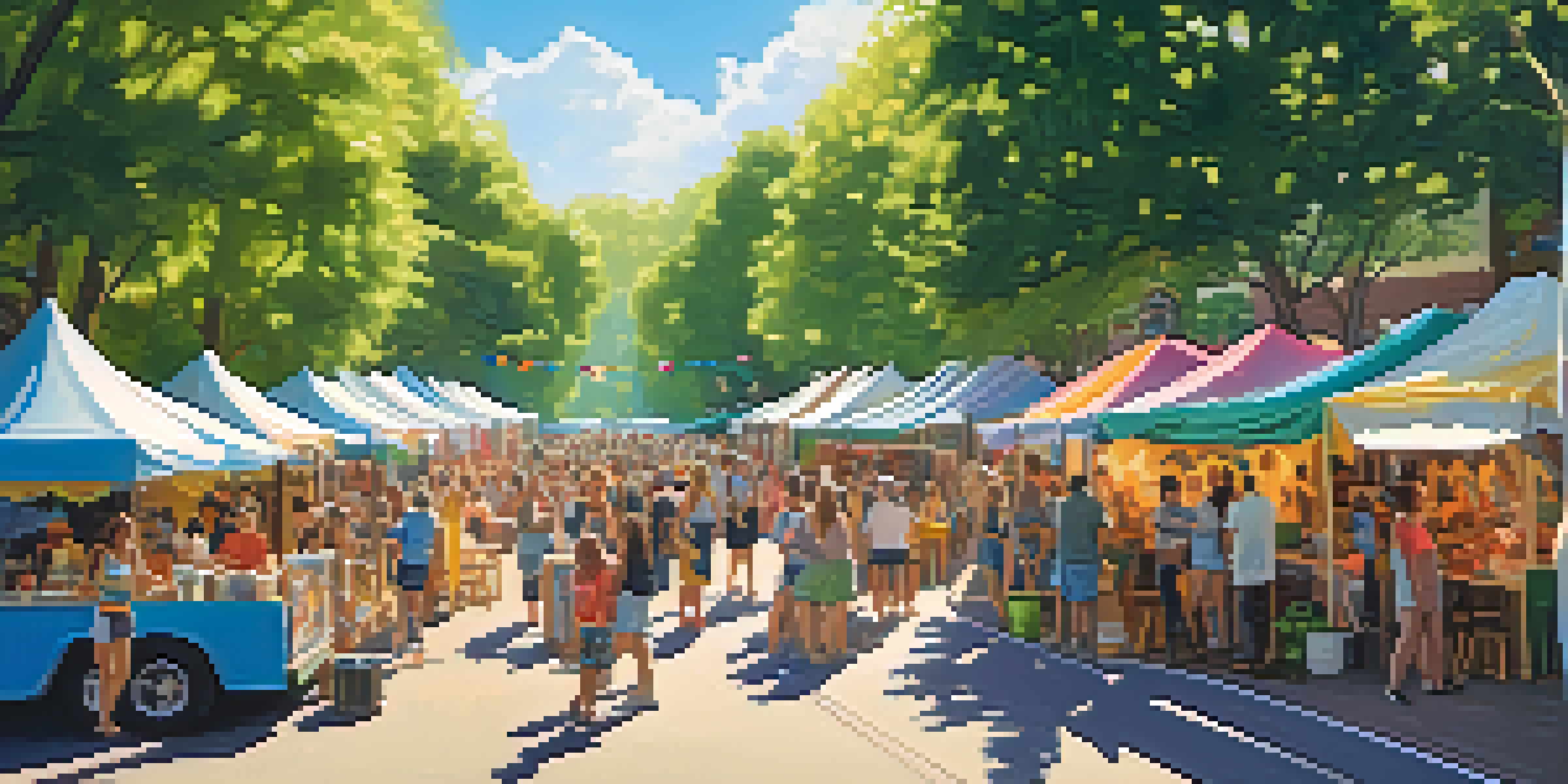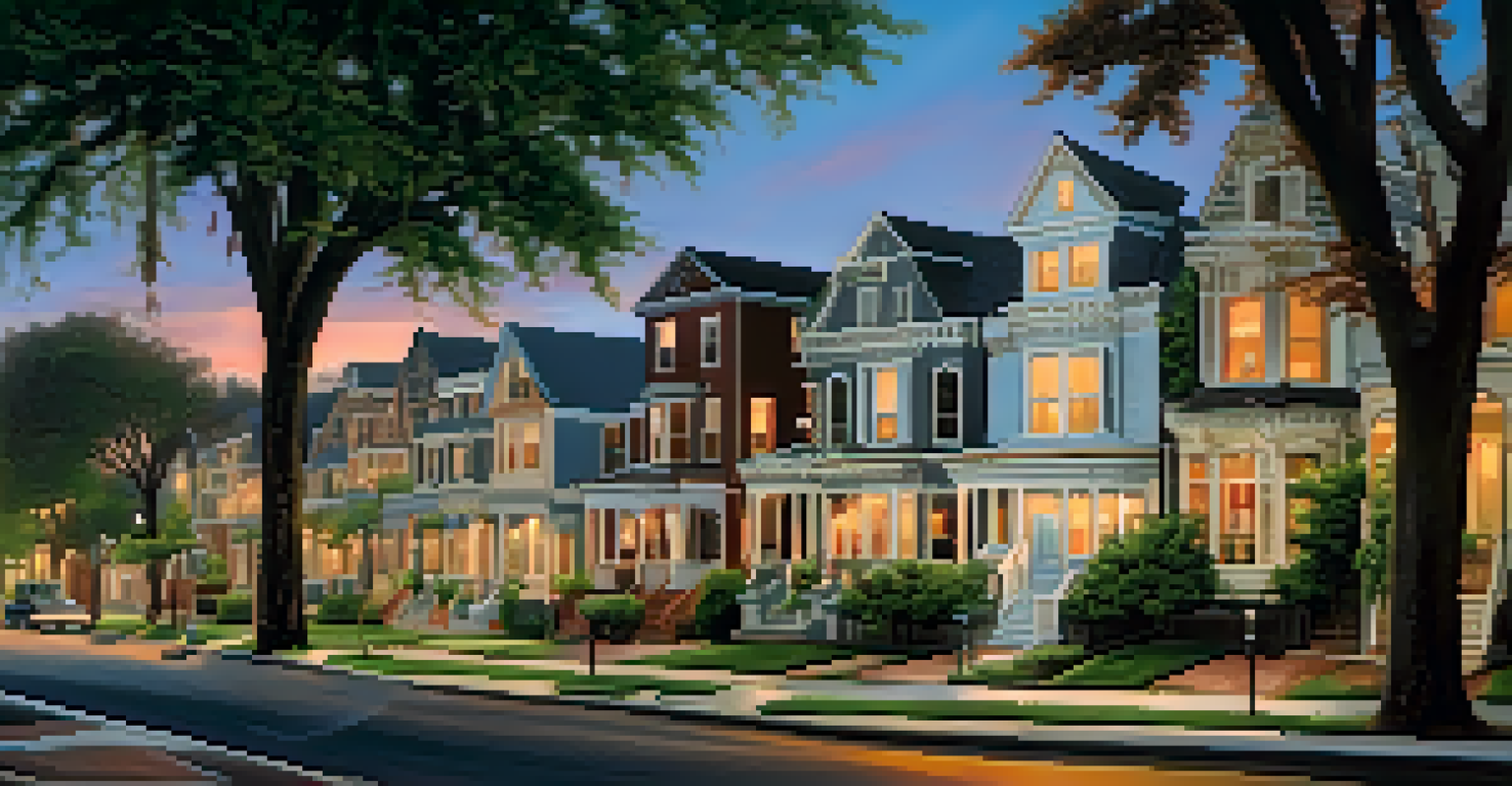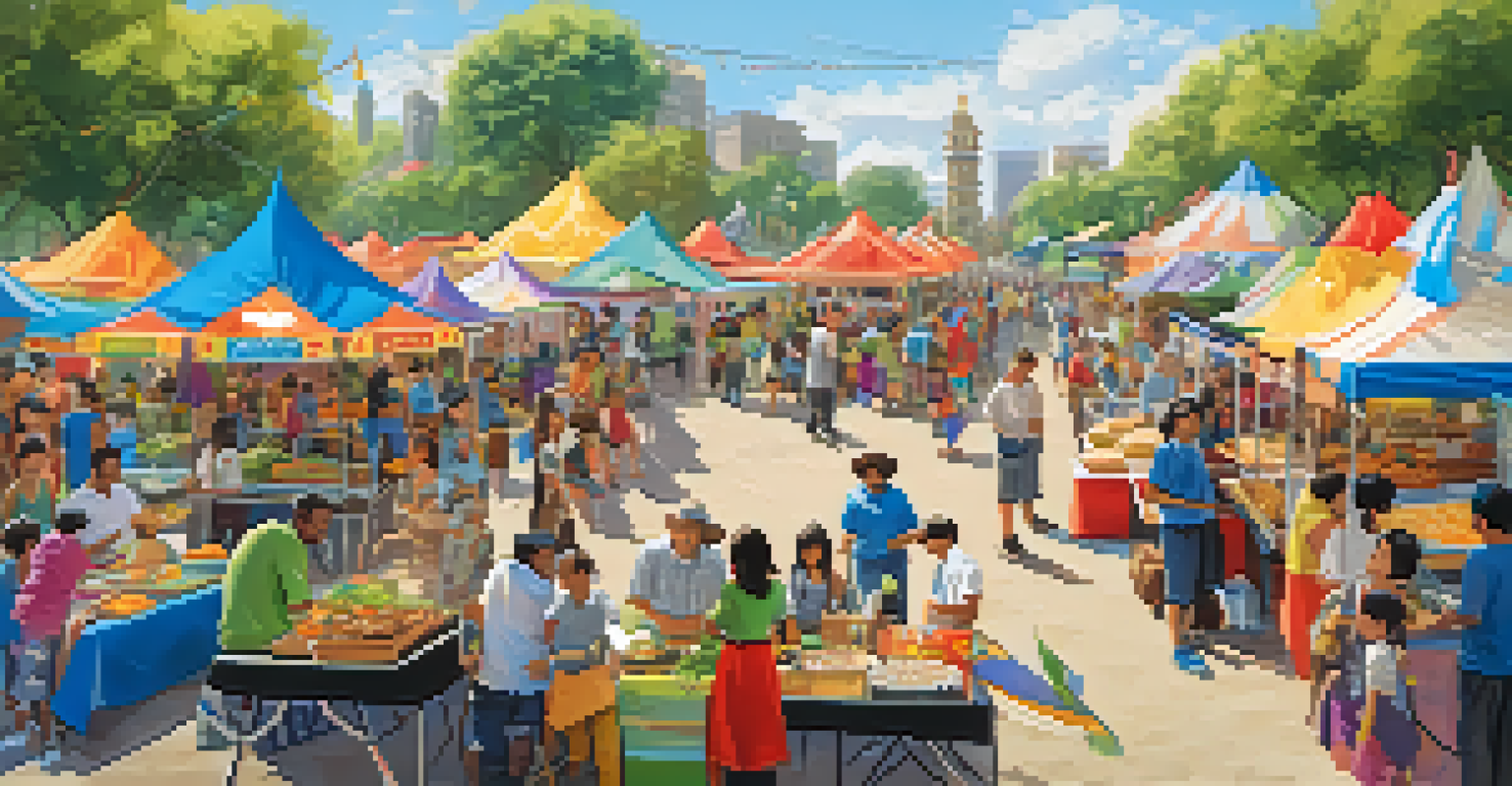Understanding Local Culture's Influence on Property Value

The Connection Between Culture and Property Value
Local culture plays a critical role in shaping property values. It encompasses the traditions, beliefs, and lifestyle of a community, which buyers often find appealing. For instance, a neighborhood known for its vibrant arts scene might attract buyers willing to pay a premium, as they value creativity and cultural engagement.
Culture is the widening of the mind and of the spirit.
Moreover, cultural factors can influence everything from the architectural style of homes to the types of amenities available. A community that prioritizes green spaces and outdoor activities may see higher property prices, reflecting buyers' desires for a healthy lifestyle. Thus, understanding these cultural nuances is essential for both buyers and sellers.
In essence, the connection between culture and property value is a dynamic interplay. As cultural trends evolve, so too do the desirability and market value of properties within those communities.
Cultural Amenities and Their Impact
Cultural amenities, such as museums, theaters, and local festivals, enhance a neighborhood's appeal. These features not only enrich residents' lives but also attract potential homebuyers. For example, a community hosting annual art fairs or music festivals often sees a spike in interest from buyers who value those experiences.

Additionally, the presence of quality schools, parks, and recreational facilities further contributes to a property's value. Families looking to settle down often consider these amenities crucial, resulting in higher demand and increased property prices. Therefore, cultural amenities can serve as a significant selling point in real estate.
Culture Shapes Property Values
Local culture significantly influences property values by appealing to buyers through traditions, amenities, and lifestyle preferences.
Ultimately, the more vibrant and active a community's cultural scene, the more likely it is to attract buyers willing to invest in property. This symbiotic relationship between culture and property value highlights the importance of local identity.
Historical Significance and Property Value
The history of an area can greatly influence its property values. Neighborhoods with rich historical backgrounds often possess unique architectural styles and stories that attract buyers. For instance, homes in historically preserved districts can command higher prices due to their character and the prestige associated with their past.
The past is never dead. It's not even past.
Furthermore, a community’s history can create a sense of belonging and pride among residents. This emotional connection can lead to increased demand, as buyers often seek properties that resonate with their values and lifestyle aspirations. Such historical significance can be a powerful driver of property value.
In conclusion, the historical context of a neighborhood not only enhances its charm but also directly impacts market dynamics. Buyers are frequently willing to pay a premium for properties that come with a story.
Diversity and Its Role in Property Value
Diversity within a community can significantly enhance its property value. Neighborhoods that embrace a mix of cultures often attract a wider range of buyers, each bringing unique preferences and values. This diversity can lead to more vibrant local economies and richer community experiences, which are appealing to potential homeowners.
Moreover, diverse communities often foster inclusivity and acceptance, making them desirable places to live. Buyers looking for a welcoming environment may prioritize these neighborhoods, leading to increased demand and higher property prices. This trend highlights how cultural diversity can be a strong asset in real estate markets.
Historical Significance Matters
Neighborhoods with rich histories and unique architectural styles often command higher prices due to their charm and prestige.
Ultimately, the presence of a diverse population can create a dynamic real estate landscape. As communities evolve, their cultural diversity can play a pivotal role in shaping property values and attracting buyers.
Local Traditions and Buyer Preferences
Local traditions can significantly sway buyer preferences and, consequently, property values. Festivals, cuisine, and annual events shape the identity of a community, making it attractive to specific demographics. For instance, an area renowned for its food festivals may appeal to culinary enthusiasts willing to invest in a home nearby.
Additionally, traditions often influence the lifestyle choices of residents. Buyers may look for neighborhoods that align with their values, such as those promoting sustainability or family-oriented activities. This alignment can lead to a stronger demand for properties in culturally rich areas.
In summary, local traditions not only create a unique living experience but also play a crucial role in shaping the real estate market. Buyers are often drawn to properties that resonate with their cultural interests and lifestyle.
Community Engagement and Property Demand
Community engagement initiatives can have a profound impact on property values. When residents actively participate in local governance and events, it fosters a sense of belonging and pride. This connectedness can enhance the overall desirability of a neighborhood, leading to an uptick in property demand.
Furthermore, engaged communities often see improvements in local services and amenities, directly influencing property values. For example, a neighborhood that organizes clean-up days or neighborhood watch programs can create a safer and more appealing environment, raising interest among prospective buyers.
Diversity Boosts Market Appeal
Diverse communities attract a wider range of buyers, enhancing local economies and raising property values.
Ultimately, a community’s level of engagement is a telling indicator of its vibrancy and livability. Buyers are more likely to invest in areas where they see active participation and collective improvement.
Market Trends Influenced by Local Culture
Local culture can significantly dictate market trends in real estate. As cultural preferences shift, so do buyer expectations and demands. For instance, an increasing emphasis on sustainability and eco-friendly practices has led to a rise in demand for green homes, reflecting cultural values around environmental responsibility.
Moreover, cultural trends can influence the types of properties that are in demand. Areas that prioritize modern, open-concept living may see a higher demand for contemporary homes, while those emphasizing traditional values might attract buyers looking for classic designs. This interplay highlights how cultural shifts can reshape the property landscape.

In conclusion, staying attuned to local cultural trends is essential for real estate professionals and buyers alike. Understanding these trends can provide valuable insights into property value fluctuations.